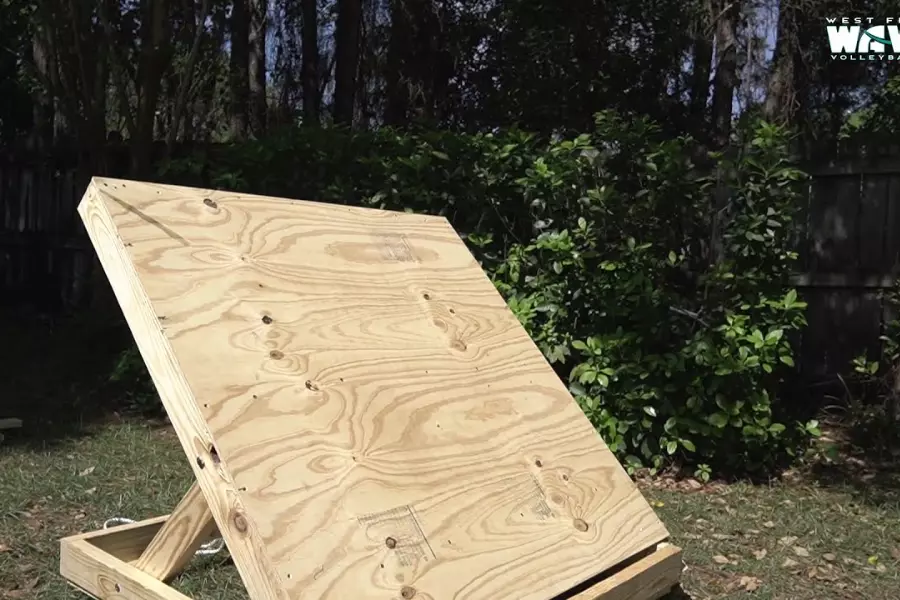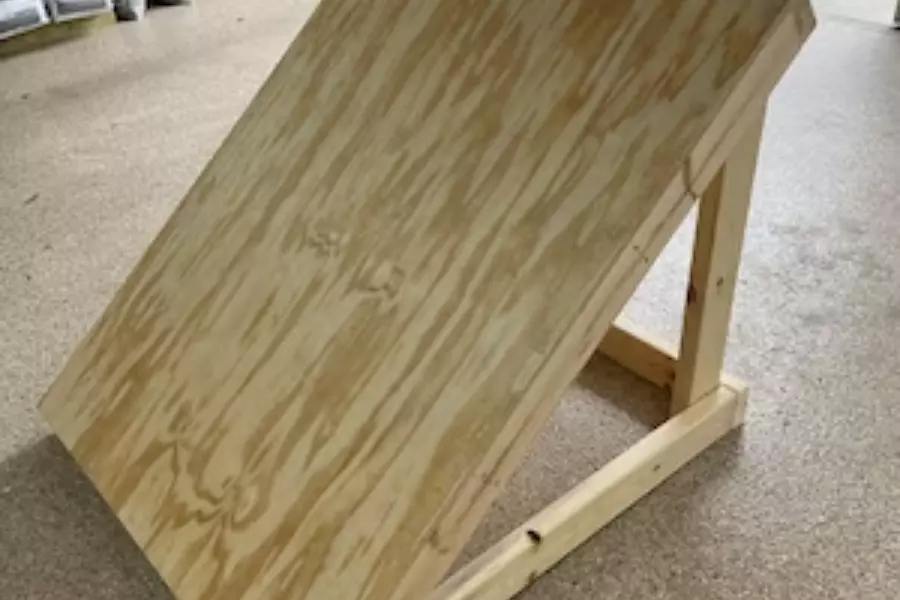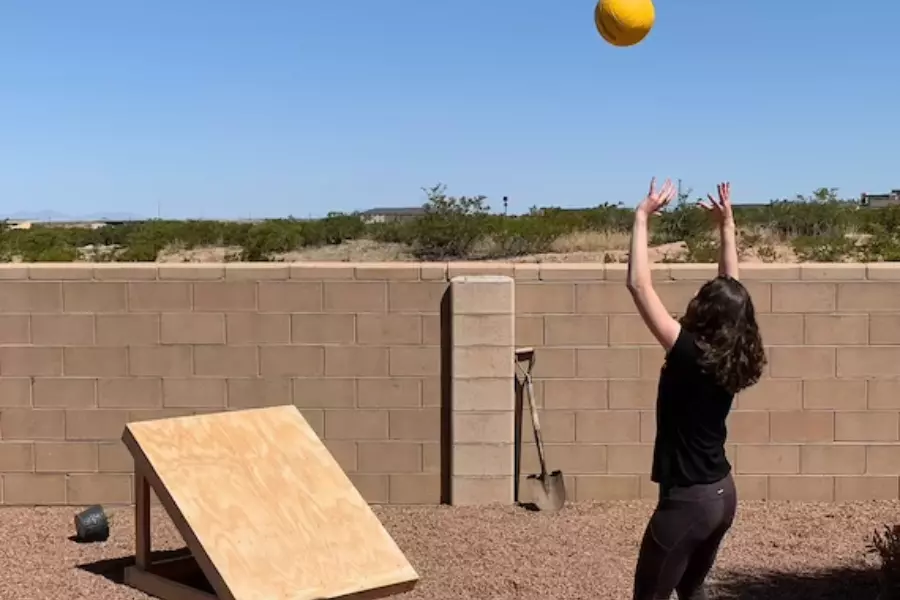Volleyball rebound boards are an excellent addition to your training regimen if you are an enthusiastic volleyball player looking to improve your skills. We’ll show you how to make your own volleyball rebound board in this guide.
By using some essential materials and DIY spirit, you can create a volleyball training tool that helps you improve your skills.
What is a Volleyball Rebound Board?

It is a training aid that helps volleyball players practice their serves, spikes, and digs independently. Typically, it consists of a sturdy frame with an angle-mounted net, allowing the ball to rebound and simulate real-life situations.
You can save money by building your own rebound boards and customizing your training experience at the same time. Furthermore, if you are still considering buying volleyball rebounders, make sure you read our full buying guide first.
Why Do You Need a Volleyball Rebound Board?
- Improved Skills: You can improve your reaction time, accuracy, and ball control by using rebound boards.
- Solo Practice: By practicing alone, you can improve your skills without the need for a partner.
- Cost-Effective: Compared to buying a board, building your own is more cost-effective.
- Personalization: Choose a board that suits your preferences and style of training.
You can also read Can You Use a Baseball Rebounder for Volleyball?
Essential Materials and Tools
Here are the materials and tools you’ll need before you begin:
- Plywood
- 2×4 lumber
- Netting material
- Screws
- Drill
- Saw
- Tape measure
- Paint and brushes (optional)
- Padding material (optional)
How to Build a Volleyball Rebound Board

Step 1: Preparing the Frame
Using the 2×4 lumber, construct the frame. Build a sturdy rectangular frame by cutting the pieces to the desired dimensions.
Step 2: Adding the Plywood Surface
Make sure the frame is secure by attaching plywood. As the volleyball bounces off this surface, it will be used as a rebounding surface.
Step 3: Attaching the Net
Attach the netting material to the plywood at an angle. For the ball to bounce back effectively, make sure it’s taut and secure.
Step 4: Padding and Protection
In the event of accidental contact with the frame’s edges, consider padding the edges for safety.
Step 5: Customization and Personalization
Your rebound board can be painted in your favorite colors or customized with volleyball-related designs. Think outside the box!
Maintenance and Durability

Keep your rebound board in good condition by regularly inspecting and maintaining it. Wear-out parts should be replaced as soon as possible.
Safety Measures
Ensure that the area around your rebound board is clear, and wear appropriate safety gear.
Tips for Using the Volleyball Rebound Board
- The intensity of the drills should be gradually increased after you complete the basic drills.
- You can improve your game by focusing on different aspects such as serving, spiking, and setting.
- Simulate real-game scenarios by varying your angles and positions.
Benefits of Using a Volleyball Rebound Board
- Enhanced skills
- Convenient solo practice
- Personalized training
- Cost-effective solution
Where to Get Quality Rebound Boards
Online retailers or sports equipment stores sell quality rebound boards if you prefer a professionally made rebounder.
FAQs
Can I use the rebound board for other sports?
It was designed primarily for volleyball, but it can be adapted to other ball sports as well.
Is the rebound board suitable for beginners?
By practicing basic skills and gradually progressing, beginners can benefit from it.
How much does it cost to build a rebound board?
There is a wide range of prices depending on the materials and customization options, but they are usually affordable.
Can I take my rebound board to the beach or park for outdoor practice?
Portable equipment allows you to practice anywhere.
Are there any safety precautions I should take when using a rebound board?
Wear protective gear when practicing and ensure the area is free of obstacles.
Conclusion
You can significantly improve your volleyball skills by building a volleyball rebound board.
By customizing your board, you’ll be able to experience personalized training sessions, enhancing your skills and confidence.
You can also read What is a Defensive Specialist in Volleyball?





